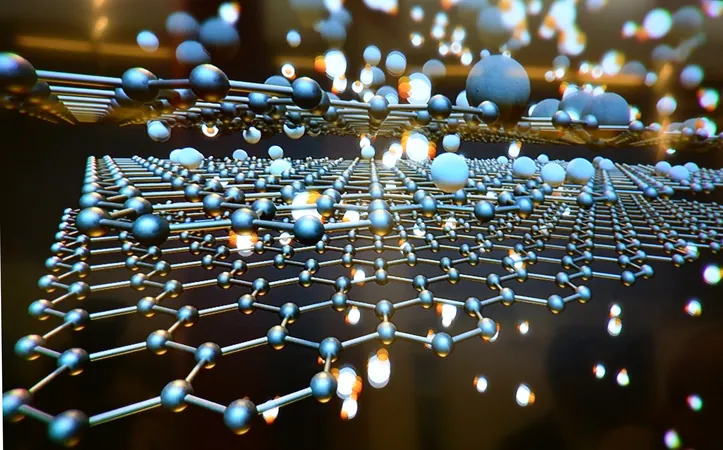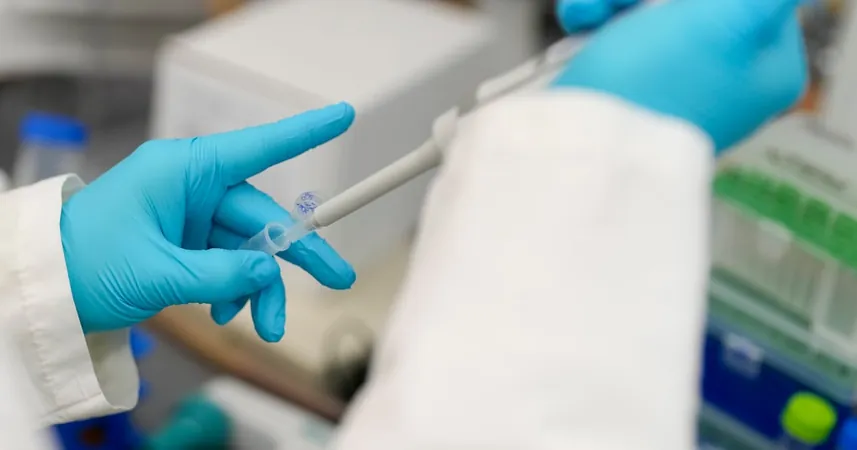
Revolutionary Breakthrough: Transforming Graphene Defects into High-Performance Features!
2025-09-20
Author: Michael
Unlocking Graphene: A New Era of Enhanced Performance
Groundbreaking research has unveiled a revolutionary method to create graphene that intentionally incorporates structural defects to significantly boost its performance across multiple applications—from sensors and batteries to cutting-edge electronics. This innovative approach could change the game for industries relying on advanced materials.
The Science Behind the Success
Led by scientists from the University of Nottingham and the University of Warwick, alongside the Diamond Light Source, a transformative single-step process was developed using a specialized molecule called Azupyrene. This molecule is uniquely shaped to introduce the desired defects into graphene, which is typically celebrated for its remarkable strength and thinness.
David Duncan, an Associate Professor at the University of Nottingham and a key author of the study, highlights that traditional graphene, while extraordinary, sometimes suffers from being 'too perfect.' This perfection results in weak interactions with other materials, undermining its potential in the semiconductor arena.
Defects: From Detriment to Dynamic Assets
In a significant shift in perspective, this research treats defects not as flaws but as strategic enhancements. The intentional imperfections increase the material's reactivity, making graphene more effective as a catalyst and improving its gas detection capabilities—essential for next-generation sensors. Moreover, these defects can modify the electronic and magnetic properties, paving the way for groundbreaking uses in semiconductor technology.
The Chemistry of Creation
Graphene's structure typically consists of a flat arrangement of six carbon atoms. However, the innovative defect involves neighboring rings of five and seven carbon atoms, which Azupyrene adeptly mimics. By controlling the growth temperature, researchers can manipulate the density of these advantageous defects.
Real-World Application: Transferring Technology
In a significant advancement, the Graphene Institute in Manchester demonstrated that this modified graphene could be transferred onto various surfaces while preserving its unique defects. This achievement marks a vital step toward integrating these materials into functional devices.
A Collaborative Scientific Endeavor
Utilizing an array of sophisticated tools and fostering collaboration across the UK, Germany, and Sweden, this research benefitted from advanced microscopy and spectroscopy facilities at the Diamond Light Source and MAX IV. The UK's national supercomputer, ARCHER2, was also instrumental in analyzing the atomic structure of the defective graphene, confirming the presence and impact of the defects.
Pioneering Future Research
Professor Reinhard Maurer from the University of Warwick emphasizes that by carefully selecting starting molecules and adjusting growth conditions, they have successfully controlled the introduction of imperfections in graphene. This meticulous work merges atomic-scale imaging, spectroscopy, and computational simulations.
Dr. Tien-Lin Lee from Diamond Light Source reinforces the importance of this project, noting, "This study exemplifies what can be achieved through international collaboration and integrating diverse scientific expertise. By pooling advanced techniques across nations, we unveiled atomic-scale mechanisms behind defect formation in graphene, a feat no singular team could accomplish alone."









 Brasil (PT)
Brasil (PT)
 Canada (EN)
Canada (EN)
 Chile (ES)
Chile (ES)
 Česko (CS)
Česko (CS)
 대한민국 (KO)
대한민국 (KO)
 España (ES)
España (ES)
 France (FR)
France (FR)
 Hong Kong (EN)
Hong Kong (EN)
 Italia (IT)
Italia (IT)
 日本 (JA)
日本 (JA)
 Magyarország (HU)
Magyarország (HU)
 Norge (NO)
Norge (NO)
 Polska (PL)
Polska (PL)
 Schweiz (DE)
Schweiz (DE)
 Singapore (EN)
Singapore (EN)
 Sverige (SV)
Sverige (SV)
 Suomi (FI)
Suomi (FI)
 Türkiye (TR)
Türkiye (TR)
 الإمارات العربية المتحدة (AR)
الإمارات العربية المتحدة (AR)